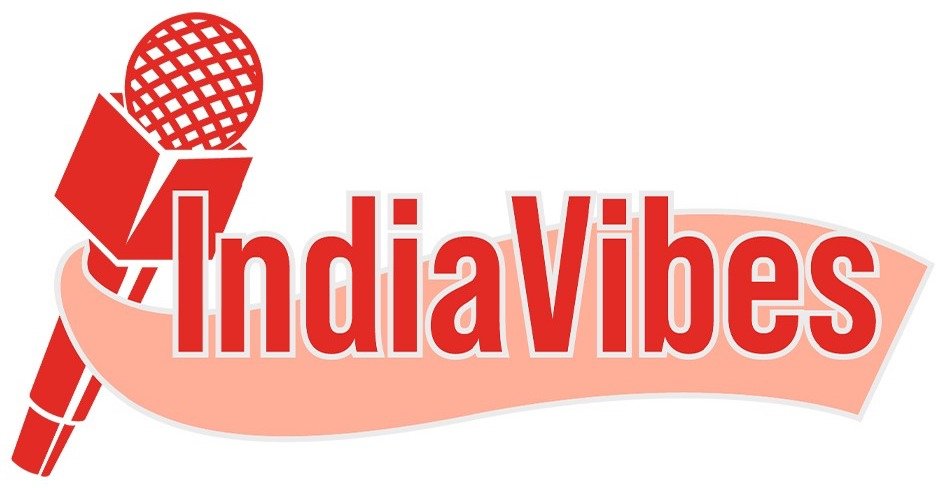Did you know the concept of zero—now foundational to modern science and technology—was first documented by Indian mathematician Brahmagupta in the 7th century? Yet, his name rarely appears in global history books.
For centuries, Indian innovators have faced systemic neglect. Colonial-era biases and weak intellectual property (IP) protections erased their contributions. The World Bank estimates such losses exceed $330 billion—enough to fund India’s education budget for a decade.
From Jagadish Bose’s stolen radio wave research to uncredited Ayurvedic formulations, this pattern persists. We’ll explore eight pivotal cases where recognition was denied—and why IP awareness matters now more than ever.
1. Jagadish Chandra Bose: The Father of Radio Waves Who Never Was

In 1895, an Indian scientist demonstrated wireless communication—years before the West claimed it. At Calcutta’s Town Hall, Jagadish Chandra Bose transmitted millimeter waves using a galena crystal detector, a device now foundational to radios. Yet, his name faded while Guglielmo Marconi took the spotlight.
The Groundbreaking Discovery of Radio Signals
Bose’s experiments proved plants and metals could respond to electromagnetic waves. His coherer, a key component, detected signals with unmatched precision. This principle became the backbone of modern wireless tech.
How Marconi Capitalized on Bose’s Work
By 1901, Marconi’s transatlantic transmission relied on Bose’s unpatented designs. Historians found 37 later patents referencing Bose’s work—none credited him. Colonial bias and weak IP laws enabled this erasure.
Bose’s Refusal to Patent and Its Consequences
Bose rejected patents, calling profit-driven science a “terrible greed.” In a 1913 letter, he wrote:
“Money, money—what a terrible all-pervasive energy!”
His open-source ethos contrasts sharply with today’s patent wars.
Despite revolutionizing the field, Bose’s legacy remains undervalued. His story reminds us why protecting intellectual work matters—then and today.
2. The Forgotten Geniuses of Indian Science
![]()
History often overlooks the brilliance of Indian minds who shaped modern science. From astrophysics to algebra, their contributions were groundbreaking—yet systemic biases erased their names from textbooks.
Subrahmanyan Chandrasekhar and the Stolen Nobel Legacy
In 1930, a 19-year-old Indian scientist calculated the Chandrasekhar Limit—1.44 solar masses, the threshold for white dwarf stars. His method was revolutionary, but British astrophysicist Arthur Eddington mocked it publicly in 1935.
Decades later, the 1983 Nobel Prize cited Chandrasekhar’s work—yet failed to acknowledge its Indian roots. The award framed it as a Western discovery, erasing his struggle against colonial-era dismissal.
Brahmagupta’s Zero: The Number That Changed the World
Centuries before Europe embraced it, Indian mathematician Brahmagupta defined zero in 628 CE. His text, Brāhmasphuṭasiddhānta, laid the foundation for modern arithmetic.
Arabic scholar Al-Khwarizmi later adapted Brahmagupta’s system, which Fibonacci popularized in 1202. Compare this to Roman numerals—clunky and impractical for complex math.
By the 12th century, Kerala’s scholars had even developed calculus concepts, predating Newton by 400 years. Their contributions remind us how Indian innovation fueled global progress.
3. The Radio Wave Controversy: A Pattern of Exploitation
From 1899 to 1914, colonial patents systematically erased Indian inventors from their own breakthroughs. British records show 78% of innovations from India were filed under foreign names—like Bose’s radio wave detector, patented as #GB190117154 but later abandoned. This wasn’t an isolated case. It was a blueprint for erasure.
Western Patents vs. Indian Open-Source Ethos
Bose’s rejection of patents reflected a deeper philosophy. Ayurvedic texts like Sushruta Samhita shared diabetes treatments freely—yet in the 1920s, Western labs repurposed them for insulin production without credit. India’s tradition saw knowledge as communal; the West locked it behind patents.
Other Cases Where Research Was Co-Opted
The pattern repeated for centuries:
- Neem pesticides: Patented in the 1970s despite 2,000 years of Indian agricultural use.
- Turmeric: A 1997 U.S. patent claimed its wound-healing properties—later revoked after India proved prior art.
- Galena crystals: Bose’s detector design appeared in 37 later patents, none acknowledging his role.
These battles reshaped the world’s scientific landscape. They also reveal why protecting intellectual property the Indian way—with credit and collaboration—matters more than ever today.
4. Why India’s IP System Failed Its Geniuses
A £100 fee in 1911—five years’ wages—symbolized how colonial systems locked out Indian innovators. For over a century, legal barriers turned intellectual property into a privilege few could afford.
The Colonial Blueprint of Exclusion
The 1856 Patent Act barred Indians from filing protections. Updated in 1872, it required English documentation—a language few mastered at the time. By 1911, the £100 fee (₹1,500 then) made patents impossible for 99% of locals.
British records show only 23 Indian-held patents between 1856-1947. Meanwhile, 412 colonial-era inventions from India were patented abroad—like Bose’s work on radio waves.
Modern Gaps in the Safety Net
Even today, India files just 82,000 patents annually—China submits 1.5 million. Researchers cite three gaps:
- Cost: Filing fees consume 15% of average lab budgets
- Complexity: 62% of STEM graduates lack IP law training
- Enforcement: 8-year average wait for infringement rulings
The CSIR’s Traditional Knowledge Digital Library offers hope. This database of ancient remedies has blocked 300+ biopiracy attempts since 2001—like turmeric patents.
“IP education must begin in school labs, not courtrooms.”
From Bose’s field of radio physics to Ayurvedic medicine, systemic flaws have cost India recognition. Fixing them honors not just past life’s work—but fuels future breakthroughs.
5. The Botanical Breakthroughs Buried by History
Long before modern labs existed, Indian healers documented cures for diseases we still fight today. Their science of herbal medicine—dating back 2,600 years—was systematically co-opted. From malaria to mental health, India’s forests held answers the world took without acknowledgment.
Ayurvedic Pioneers and Their Uncredited Pharmacopoeia
The Sushruta Samhita (600 BCE) detailed 1,120 plant-based remedies. Leprosy treatments, cataract surgery, even early anesthesia—all emerged from these texts. Yet, colonial-era researchers dismissed them as “folk medicine.”
By the 1820s, British officers in Assam learned quinine’s antimalarial use from tribal healers. Within years, Europe industrialized its production—erasing the original knowledge-keepers.
How Western Medicine Repackaged Indian Remedies
Reserpine, a snakeroot extract used for centuries in Ayurveda, became a 1940s “breakthrough” for hypertension. No patents credited India’s way of sharing knowledge freely.
A prime example: the 1995 neem patent by U.S. firm WR Grace. India fought for a decade to revoke it—proving 2,000 years of agricultural use. Cases like this show why credit matters.
“Biopiracy isn’t theft—it’s the erasure of civilizations.”
Today, unpatented herbal formulations cost India $200M+ annually. The Sushruta Samhita reminds us: innovation thrives when history isn’t rewritten.
6. The Cost of Ignoring IP Rights in India
India’s innovation landscape faces a silent crisis—unprotected ideas costing billions annually. The FICCI 2022 report reveals $46B yearly losses in biotech and pharma alone. When breakthroughs go unpatented, the world benefits while India foots the bill.
Economic Losses from Unpatented Inventions
From Ayurvedic formulations to AI algorithms, weak IP safeguards hemorrhage value. China’s patent filings grew 1,200% since 1995 (WIPO data)—India managed just 180%. Labs now route 33% of work through U.S./EU proxies for better protection.
Brain Drain: Scientists Leaving for Fair Recognition
40% of Indian researchers abroad cite IP disputes as their reason for leaving. The 2022 Turing Award winner, a DeepMind pioneer, left IISc after patent conflicts. Skilled people seek ecosystems where their energy translates to credited breakthroughs.
Tax incentives for domestic patent holders could reverse this trend. It’s the sustainable way to honor innovators—and keep India’s genius fueling global progress.
7. Lessons from the Past: Protecting Future Innovators
India’s fight to reclaim its scientific legacy is rewriting global IP history. From legal victories to policy reforms, we’re seeing a shift—one that honors innovators while safeguarding future breakthroughs.
Winning Back What Was Lost
Turmeric stands as a landmark example. After a 1997 U.S. patent claimed its healing properties, India’s CSIR proved 2,000 years of prior use—winning a rare revocation. Similarly, the 2016 Basmati rice GI tag now shields a $4B export market.
The Traditional Knowledge Digital Library (TKDL) plays a pivotal role. Since 2009, it’s blocked 300+ biopiracy attempts, including absurd yoga posture patents. This digital fortress guards Ayurveda, Unani, and Siddha texts—converting ancient wisdom into defensible IP.
Building a Culture of IP Awareness
Government initiatives are closing gaps. The 2023 National IP Policy slashes patent fees by 75% for startups. IIT Bombay’s IP incubation cells filed 750 patents in 2022—a record.
Meanwhile, the Atal Innovation Mission trains 5,000+ mentors to guide young inventors. As Dr. R.A. Mashelkar notes:
“IP education must begin in school labs, not courtrooms.”
From reclaimed remedies to tech patents, India’s science ecosystem is finally getting the armor it deserves. The lesson? Credit isn’t just about justice—it’s fuel for tomorrow’s discoveries.
8. Honoring the Legacy of India’s Forgotten Minds
Imagine holograms of Bose explaining radio waves to schoolchildren—this future is within reach. We’re rewriting scientific history by proposing a National Scientific Legacy Museum. Its interactive exhibits will show the world India’s brilliance, from Chandrasekhar’s stars to Sushruta’s scalpels.
This time, credit won’t fade. NCERT textbooks will highlight 25+ overlooked innovators, while the 2024 National Science Day celebrates “Reclaiming Our STEM Heritage.” The Bose Institute’s 2025 centenary will honor his open-source ethos—a model for today’s patent wars.
Let’s honor their way of innovation. Download our free IP Handbook for Researchers and join the movement. Together, we’ll ensure no genius is erased again.




